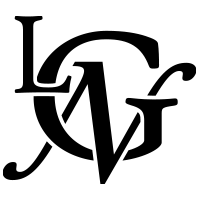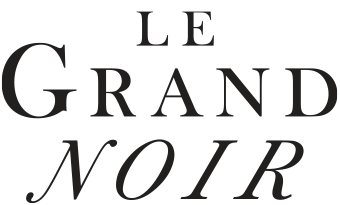All your questions answered
Why the Sheep?
In the 13th century, the Minervois region and the nearby Game of Thrones-like castle-town of Carcassonne were at the heart of a bloody conflict with the Catholic church in Rome. The French had formed a breakaway sect called the Cathars whose revolutionary beliefs included the then-unacceptable notion that women were equal to men, that the church shouldn’t accumulate wealth and that there should be no rich bishops and archbishops. All humans, the Cathars believed, were God’s sheep, and the earthily responsibility for their care was in the hands of elders who wore black cloaks and were called ‘perfects’.
There was a clear association between the Cathars who were persecuted for thinking differently, and the unconventional style of the Grand Noir wines. By standing apart from the herd, the Cathars were the black sheep. Gradually, these ideas came together to form the now iconic le Grand Noir label.
Ok, tell me what makes Le Grand Noir so different from all the rest?
Each of the wines has a complex character all of its own, that combines the flavours of the terroir – the combination of soil, slope and microclimate – where the grapes were grown and the blend of varieties. Before Le Grand Noir almost nobody in the region blended Shiraz and Cabernet Sauvignon; Grenache, Shiraz and Mourvedre; and Chardonnay and Viognier.
Why do you make so many blends?
We’re like cooks. All that matters to us is producing wines that taste as good as possible. Some styles of wines benefit from blending grape varieties – most Bordeaux and Champagnes are blends – while others don’t.
Do you use oak barrels?
Oak is like salt, if you can taste it in a dish, the cook has probably added too much. Some wine styles such as our Chardonnay gain from spending a little time in new or young oak barrels, thanks to the subtle vanilla notes they pick up from the wood. Others, such as our refreshing Sauvignon Blanc are better without it. Whatever the wine, however, we never want the oak to overshadow the natural flavours of the wine.
What is the background to Le Grand Noir – and why should I be interested?
Le Grand Noir is what happens when Robert Joseph, an award winning wine critic; Hugh Ryman, a winemaker with experience across the globe; and a top label-designer called Kevin Shaw get together over a few good bottles and wonder how they might, very, very slightly, change the world. What they wanted to do was create a wine that brought together the classic, complex, food-friendly, flavours of France with the accessibility of the New World.
Where are the wines from?
All of le Grand Noir wines come from vineyards in the Minervois region, in Languedoc-Roussillon in the south of France. The Romans made wine here – there’s a 2,000 year-old burial site close to one of our vineyards – and grapes love the warm sunny climate and the cool breezes from the nearby Mediterranean and the ‘Black’ mountains. The wonderfully perfumed Viognier which thrives in a warm climate, for example, all comes from the vines growing close to the medieval walled village of Azille. The soil here is marked by grés – clay-limestone which seems to have a particular affinity with this grape variety. Chardonnay grows well in Azille too, but with his experience of blending wines from different vineyards in Bordeaux, Hugh Ryman prefers to marry it with Chardonnay from other parts of the region, including warm-climate vineyards around the village of Pepieux where the wind from the mountains brings fresh, perfumed flavours.
The fresh Sauvignon Blanc comes from three villages: Rieux-Minervois, Homps, and Aigues Vives. Of these, the little Gallo-Roman village of Homps on the banks of the Canal du Midi is well known to visitors to the region. It has the remains of an old castle, a Romanesque Church and a stream mysteriously called ‘Double Argent’ – Double Money. Homps was once renowned for the barrels of local wine that were shipped on the canal to Bordeaux – in the days before Appellation Contrôlée tightened the rules on what could be sold under that region’s name. The fruitiness of the Homps wine is matched by some zinginess from the grapes grown near Aigues Vives, another old village whose name, ‘white waters’ in the old local language, refers to the springs in the nearby hills.
The intensely blackcurranty Cabernet Sauvignon also comes from the latter two villages as well as Puicheric and the hilly little commune of Felines- Minervois. For the spicy, berryish Syrah, Ryman and the Jean d’Alibert team also went to Homps, as well as la Livinère in the hills and another canal-side village, Puicheric. La Livinière, which is also one of the sources of le Petit Noir Grenache has been recognized as one of the finest regions in the region by being given its own ‘grand cru’ designation.
Alongside the Grenache grapes from la Livinière, are ones grown around Caunes, another lovely village, with narrow winding streets, an old abbey and nearby quarries whose pink marble was used to build the Paris Opera House. Caunes is a particularly popular place for Hugh Ryman, Robert Joseph and the Jean d’Alibert winemaking team, thanks largely to the brilliant food served in the picturesque courtyard of the Hotel d’Alibert by its art-loving owner Frederick (Fred) Guiraud.
Why do some wines have screwcaps?
Like almost all of the producers of Sauvignon Blanc and Pinot Noir in New Zealand, Riesling in Australia, we really like the freshness that you get in wines sealed with screwcaps.
Who actually grows the grapes and makes the wine?
Le Grand Noir would not exist if it were not for the families who lovingly and painstakingly tend their own vines throughout the year, while Eric Lacuve and his winemaking team at Celliers Jean d’Alibert are some of the best in France. Unusually open-minded and youthful – the average age is just 40 – they also have an intense love and respect for the traditions of their region.
How green is the sheep?
The Celliers Jean d’Alibert has introducing a sustainability programme to minimise the use of pesticides and other vineyard treatments, as well as reducing the carbon footprint of both vineyard and winery. The weight of the Le Grand Noir bottles was recently reduced as part of this programme.
How long should I keep these wines before opening?
We recommend waiting until you get the bottles home. They’re ready to enjoy as soon as they leave our cellars, so you don’t have to lock them away in yours – or your wine rack if, like most normal human beings, you don’t happen to have a cellar. All the wines in the Le Grand Noir range will be great to drink for at least a couple of years after the harvest (thanks in part to those screwcaps which do a great job of keeping the wine fresh), but we like drinking them young.
What food would you recommend I drink them with?
We love drinking all the Le Grand Noir by themselves – but the fact that we don’t leave the wine in new oak barrels for too long means that they are also ideal to enjoy with all sorts of food. We’d opt for the Cabernet-Shiraz with fuller flavoured meat dishes, while the Pinot Noir is perfect with a wide range of lighter dishes. It can even go well with fish, like Salmon and Tuna. Drink the Chardonnay with almost anything you’re eating, but in particular try it with a subtly spicy Thai, Vietnamese or Chinese dish. The Viognier in the blend will add a touch of magic to the pairing…
Are these wines ok for vegans?
Yes, no animal products are used in their production.
Do sheep like wine?
To be honest, most of them have yet to develop a taste for it. And very few of them have mastered the art of using a corkscrew or even unscrewing a bottle. But we haven’t given up…
Any other questions?
If there’s anything we haven’t covered – or if there’s anything else you’d like to talk to us about, we’d love to hear from you.


